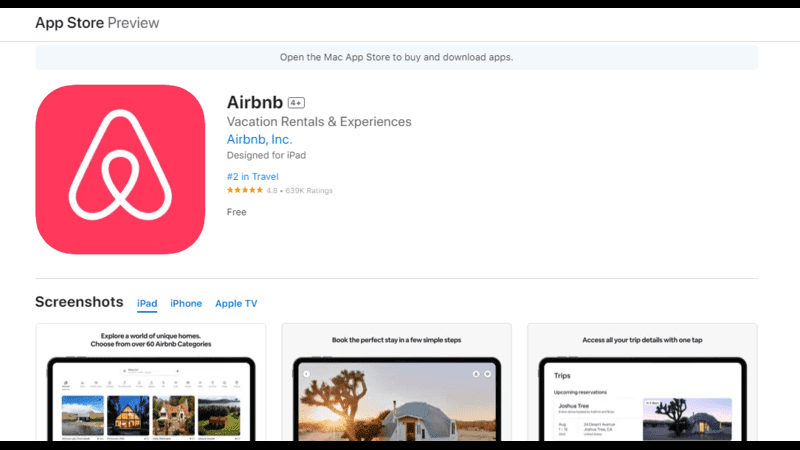16 Creative Ways to Launch an Airbnb Business Without Upfront Capital

Introduction: Do you want to earn extra income through Airbnb but don’t have the funds to buy a property? Many believe this is a barrier to entry and stop there. However, it’s entirely possible to start an Airbnb business without any upfront money—you just need to explore alternative approaches and be creative. In this guide, we explore 16 ways to help you get started. Whether it’s learning how to operate an Airbnb without owning property or finding ways to invest with no upfront costs, you’ll discover options that suit your situation. Read on to find the best fit for you! Can you start an Airbnb with no money? Yes, you can! There are several ways to get into the Airbnb business without needing substantial upfront capital. If you’re looking to own an Airbnb, you can explore financing options that help you secure funds for a down payment on a property. Alternatively, if you’re more interested in working within the Airbnb ecosystem, you can consider options like co-hosting, managing properties, or offering Airbnb experiences and services to travelers. Want to own an Airbnb property? If purchasing an Airbnb property is your goal, but you’re short on cash for a down payment, don’t worry—there are several financing methods available to help you get started. 1. Home Equity Loan or HELOC If you already own a home, one of the best options is to tap into your home’s equity using a home equity loan or a home equity line of credit (HELOC). These options allow you to leverage the value built up in your home. A home equity loan gives you a lump sum of cash upfront, which can be used for a down payment, while a HELOC acts as a revolving credit line that you can draw from as needed, similar to a credit card, and only repay what you spend. These are just some creative ways to get started in the Airbnb business with little to no initial investment. There are many other paths to explore, including co-hosting, rental arbitrage, and upselling services to guests. Be cautious when considering financing options like home equity loans and HELOCs, as they are both considered second mortgages. It’s wise to consult a financial expert before applying to ensure it aligns with your financial goals and risk tolerance. 2. Cash-Out Refinance If you own a home, a cash-out refinance is another viable method to secure funds. This process involves refinancing your existing mortgage for more than what you currently owe, allowing you to use the additional funds to invest in an Airbnb property. However, just like with home equity loans and HELOCs, this option requires using your home as collateral, so it’s important to carefully evaluate the risks before proceeding. 3. Seller Financing In some cases, the seller of a property may be willing to offer financing. With seller financing, you make monthly mortgage payments directly to the seller instead of going through a traditional lender. If the seller agrees to bypass a down payment, you could potentially purchase the property with little to no money upfront. Additionally, seller financing could provide opportunities to negotiate more favorable terms, such as interest rates and payment schedules. 4. Partnership Another creative approach is partnering with someone who can fund the purchase of the Airbnb property. This strategy could be more attainable than it seems, especially if you find someone who is interested in sharing the investment and potential profits. Partnerships among real estate investors are a common practice, often established to share the financial burden of property acquisition. In some cases, if you bring valuable skills, such as expertise in Airbnb management and operations, a partner might cover the entire cost in exchange for your knowledge and involvement. There are various forms of partnerships, all requiring careful planning and formal agreements. If you’re looking for a way to invest in Airbnb without your own funds, this could be a viable solution. Launching an Airbnb Business Without Funds If you’re eager to break into Airbnb hosting but don’t have the financial resources for purchasing a property or obtaining financing, there are still opportunities available. The following ideas specifically involve working directly with Airbnb. For business ideas related to Airbnb, check out the next section. 5. Utilize an Unoccupied Property One of the easiest options is to rent out a property you already own but aren’t using. If you’ve inherited a property or have moved in with a partner, leaving a spare home vacant, this is an untapped income source. With minimal preparation—cleaning, furnishing, and taking photos—you can list it on Airbnb and start earning. 6.Rent a Spare Room If you have an unused bedroom in your home, you can list it as a private room on Airbnb. This is a simple and affordable way to get started, allowing you to enter the Airbnb market with little upfront investment. Each of these approaches opens the door to Airbnb hosting with minimal financial input, offering practical ways to begin without requiring a large budget. While sharing your living spaces with Airbnb guests may not be for everyone, it could be a fantastic way to generate extra income until you’re ready to invest in a full Airbnb property. Having guests close by also makes it easier to manage tasks like check-ins, check-outs, and turnovers. 7. Try Airbnb Arbitrage You don’t need to own property to start an Airbnb business. With rental arbitrage, you can lease a property long-term and then rent it out on a short-term basis for a higher nightly rate to make a profit. Just make sure you understand your local laws and review your rental agreement carefully, as some contracts may restrict this practice. 8. Become a Co-Host One of the most affordable ways to get started with Airbnb is by becoming a co-host. You can collaborate with an existing host who has the property but needs help managing operations. Your role might involve tasks such as communicating with guests, overseeing turnovers, or handling guest reviews. While
Top Fixes for Airbnb App Glitches on MacOS

The Airbnb app has become an essential tool for hosts and guests, as it offers a user-friendly way to book accommodations and manage rental properties. However, just like any other app, the Airbnb app on MacOS can sometimes encounter glitches that hinder the user experience. This article aims to provide MacOS users practical solutions to some of the most common Airbnb app glitches. By implementing these fixes, users can minimize these glitches’ impact on their overall Airbnb experience and enjoy the platform’s features without unnecessary disruptions. It is important to remember that while these fixes may help resolve inevitable app glitches on MacOS, there can occasionally be issues out of the user’s control, such as server downtime or app updates. Monitoring Airbnb’s social media channels and staying informed on the latest updates can help users remain prepared for temporary outages and disruptions. Understanding Airbnb App Issues on MacOS Common Technical Difficulties and Error Messages When using the Airbnb app on MacOS, users may encounter various technical difficulties and error messages. Some common issues include the app freezing, crashing, or not loading correctly. Additionally, users could experience challenges with communication features, booking procedures, and navigation within the app. Error messages may vary depending on the root cause of the problem. For instance, connection issues could result in an “Unable to connect” message, while troubles with the app’s cache might display a “Cache error” on the screen. Impact of Outdated Software and Operating System One of the significant factors contributing to Airbnb app-related problems on MacOS is the usage of outdated software and operating systems. Keeping the Airbnb app and MacOS up-to-date is essential for a smooth user experience, as updates often include bug fixes, security patches, and improved compatibility with new functionalities. When an outdated app version is used, it is more likely to encounter issues like crashes, slow performance, and incompatibility with specific features. Similarly, using an outdated MacOS version could lead to compatibility problems with the Airbnb app, causing it to malfunction or not work as intended. To avoid these issues, users should regularly check for and install updates for the Airbnb app and their MacOS operating system through the App Store. If problems persist after updates, reinstalling the app might be a helpful troubleshooting step. Additionally, checking your firewall settings might resolve this issue if you cannot connect to app store on Mac. Outdated versions of the Airbnb app can lead to glitches and performance issues. To ensure you have the latest version installed, visit the App Store. If there’s an available update, download it and launch the updated Airbnb app. Troubleshooting and Quick Fixes Restarting Devices and Checking Internet Connection One of the initial steps in troubleshooting the Airbnb app on MacOS is restarting your device. This process can resolve minor glitches and refresh the system. To restart your Mac, click on the Apple logo at the top left of your screen and select “Restart.” After the restart, launch the Airbnb app and see if the issues persist. A stable internet connection is crucial for the Airbnb app to function smoothly. You can check your Wi-Fi status by clicking on the Wi-Fi icon available at the top right of your screen. If you are not connected, attempt to connect to a nearby network. If you cannot establish a connection, restart your modem or router to ensure seamless connectivity. Clearing Cache to Resolve App Crashes Clearing cache and data can resolve app crashes and other performance issues. To clear the cache on a Mac, follow these steps: Click on the “Go” menu in the Finder Hold down the “Option” key and click on “Library.” Locate and open the “Caches” folder Find the folder related to the Airbnb app (look for com.airbnb.AppName or a similar name) Move the contents of this folder to the Trash After you’ve cleared the cache, relaunch the Airbnb app to check if the issues have been resolved. App Update and Reinstallation Procedures Outdated versions of the Airbnb app can lead to glitches and performance issues. To ensure you have the latest version installed, visit the App Store. If there’s an available update, download it and launch the updated Airbnb app. If your Airbnb app is already up to date, consider reinstalling the app to address any possible hidden errors. To uninstall the Airbnb app: Open the Finder Click on “Applications” in the sidebar Locate the “Airbnb” app Drag the app to the Trash After uninstalling the app, empty your Trash, then restart your Mac for a fresh start. Reinstall the Airbnb app by visiting the App Store. Download and install the latest version, then log in using your credentials. This should resolve most issues and provide you with an improved user experience on the Airbnb app. Advanced Solutions for Persistent Problems Navigating through System Preferences Sometimes, issues with the Airbnb app on MacOS can be resolved by adjusting system preferences. If you’re experiencing persistent problems, you should reset your NVRAM (Non-Volatile Random-Access Memory) and PRAM (Parameter RAM). These are small sections of memory that store settings or values that macOS relies on, such as sound volume, display resolution, and boot disk selection. To reset your NVRAM and PRAM, follow these steps: Shut down your Mac. Press the power button to turn it on, and immediately hold down the Option, Command, P, and R keys. Hold these keys for about 20 seconds, letting your Mac go through the startup process. You can release the keys when you see the Apple logo or hear the startup chime. Keep in mind that resetting these settings may change some system preferences. Review your settings to ensure they’re configured correctly after performing these steps. Safe Mode and System Management Controller Reset If you are still facing issues with the Airbnb app on MacOS, another approach is to boot your Mac in Safe Mode and reset the System Management Controller (SMC). Safe Mode can help identify and resolve the root cause of the issue while resetting the SMC can
Navigating the Airbnb Co-Hosting Feature: A Step-by-Step Guide

Introduction: Airbnb’s co-hosting feature is a powerful tool that allows hosts to share their hosting responsibilities with trusted individuals, be it friends, family, or hired professionals. This feature can be particularly useful for hosts who manage multiple listings or those who are unable to attend to their hosting duties due to other commitments. In this article, we’ll guide you through the process of using the Airbnb co-hosting feature, step by step. 1. Understanding the Co-Hosting Feature Before we dive into the how-to, it’s important to understand what co-hosting is and how it can benefit you. A co-host is someone you invite to help manage your listing. They can handle a variety of tasks, such as messaging guests, handling reservations, updating the calendar, and even taking care of on-the-ground tasks like cleaning and maintenance. Co-hosting can be a great way to share the workload of hosting, especially if you’re managing multiple properties or if you’re often away. It can also be a way to provide better service to your guests, as having more hands on deck can lead to quicker response times and better overall guest management. 2. Inviting a Co-Host Inviting a co-host is a straightforward process. You can do this by going to your Airbnb account, selecting the listing you want to assign a co-host to, and then clicking on the “Co-hosts” option. From there, you can invite someone to be a co-host by entering their email address. They will receive an invitation and will need to accept it to become a co-host. Remember, it’s important to invite someone you trust as a co-host, as they will have access to your listing and will be interacting with your guests. 3. Setting Co-Host Responsibilities Once you’ve invited a co-host, you can set their responsibilities. Airbnb allows you to customize the tasks that your co-host can handle. These can include communicating with guests, managing reservations, updating the calendar, and handling pricing. It’s important to have a clear agreement with your co-host about their responsibilities. This can help prevent misunderstandings and ensure that your listing is managed effectively. 4. Managing Co-Host Payments One of the key aspects of co-hosting is managing payments. As the primary host, you can decide how much to pay your co-host. This can be a percentage of the earnings from each reservation, a fixed amount, or a combination of both. Airbnb makes it easy to manage co-host payments. You can set the payment terms when you invite a co-host, and Airbnb will automatically deduct the co-host’s fee from your payout after each reservation. 5. Reviewing and Adjusting Co-Hosting Arrangements Co-hosting arrangements should be reviewed regularly to ensure they’re still working for both parties. This includes reviewing the co-host’s responsibilities and payment terms. If necessary, you can adjust these terms or even end the co-hosting arrangement. Remember, effective co-hosting requires clear communication and mutual understanding. Regular reviews and adjustments can help ensure that your co-hosting arrangement continues to benefit both you and your co-host. 6. The Benefits of Co-Hosting In this section, you could delve deeper into the benefits of co-hosting, such as the ability to manage multiple listings more effectively, the potential for improved guest satisfaction due to quicker response times, and the possibility of taking time off knowing your Airbnb is in good hands. 7. Potential Challenges of Co-Hosting Every solution comes with its own set of challenges. Discuss potential issues that might arise in a co-hosting arrangement, such as disagreements over responsibilities, difficulties in communication, or differing expectations on guest interactions. Offer advice on how to anticipate and mitigate these challenges. STR Specialist’s Resources At STR Specialist, we offer a range of training programs that can help you navigate the challenges of Airbnb hosting, including managing co-hosting arrangements. Our programs, such as “More Bookings,” “95% Automation,” and “Optimized Comms,” provide practical tips and strategies to boost your bookings, automate your operations, and optimize your communications with guests. Navigating the Airbnb co-hosting feature can seem daunting at first, but with a clear understanding and a step-by-step approach, it can be a powerful tool to enhance your hosting capabilities. Whether you’re looking to share the workload, improve your guest service, or manage multiple listings, co-hosting can be a great solution. At STR Specialist, we’re here to support you on your hosting journey with resources and training programs designed to help you succeed. You may also like: The Art of Upselling: How to Increase Revenue from Your Existing Airbnb Guests
Booking Insights: Understanding How Guests Choose Airbnb and VRBO Stays

Discover the evolving habits of your guests as they navigate through the online world to plan and secure their travels. As digital platforms and the travel sector become increasingly diverse, the journey from inspiration to final booking is more complex than ever. We’ve carried out specialized studies across US to gain deeper insights into what motivates guests during their online travel shopping experience. This also allows us to highlight numerous opportunities for vacation rental owners to effectively connect with potential guests at various stages of their decision-making process. Access the report for valuable insights on vacation rentals and strategies to effectively engage and convert potential guests during their online journey to booking. Motivation Stage Guests seeking vacation rentals tend to spend more time in the initial inspiration stage compared to other types of travelers. Explore the various elements, from social media to targeted advertising, that play a crucial role in shaping traveler preferences. Learn effective ways to engage with potential guests during this critical phase before they finalize their choices. Information Gathering and Trip Organization Vacation rental guests often dedicate an extensive amount of time to exploring travel-related content during their planning and research phases. Understand which platforms and resources they consult, as well as the key considerations that impact their booking decisions. Reservation Process A variety of elements such as brand loyalty and past experiences weigh heavily on where vacation rental guests decide to make their bookings. Gain insights into the significance of these factors and discover strategies to effectively interact with potential guests prior to their final purchase decision.. Introducing the U.S. Traveler Booking Report Our in-depth U.S. Traveler Booking Report is specifically tailored to provide comprehensive insights into the American travel market. The report explores the myriad factors that influence U.S. travelers as they navigate through each stage of their journey, from initial travel inspiration to final booking. Whether you’re interested in understanding how American travelers conduct their research, what informs their planning, or what ultimately drives them to click ‘book,’ this report serves as a one-stop resource. It aims to offer an exhaustive understanding of U.S. travel trends, behaviors, and preferences, providing actionable insights for anyone vested in the American travel and hospitality industry. The Journey to Booking: Exploring How U.S. Travelers Research and Reserve Online Crucial Observations: United States Navigating a nuanced and layered booking process, this study deciphers the actions and motivations of travellers in their journey to booking. It highlights the primary elements and platforms that steer decisions related to online travel reservations. In the intricate and multi-dimensional journey towards making a booking, this study delves into the behavior patterns of travelers. It identifies the major factors and tools that impact their choices when booking travel online. The study incorporates data from U.S. travellers gathered from: • Over 800 individuals who responded to surveys • A digital panel consisting of 11,500 members Travelers Take Early Notice of Advertisements Key Insights: Distinguish Yourself in a Competitive Environment Prior to making a reservation, U.S. travelers engage more extensively with travel-related content compared to international travelers. In this saturated market, finding unique strategies to make your content memorable is crucial. Embrace Loyalty Programs U.S. travelers are more inclined to be part of loyalty schemes and consider them significant when booking. Highlight your loyalty perks across your digital platforms and think about providing special discounts to reward your committed travelers. Adopt a Ubiquitous Strategy U.S. travelers engage with a variety of resources during their booking journey. Consider employing multi-platform and cross-channel methods, and take advantage of strategic collaborations to broaden your scope and visibility. OTAs Serve Multiple Roles Travelers often rely on Online Travel Agencies (OTAs) not just for reservations but also for travel inspiration, planning, and research. By offering a comprehensive suite of services that assist travelers during their entire booking journey, we generate demand for our partners across various types of travel. You may like to read: Unlock Airbnb Success: How to Nail Your Profile Most-Searched Airbnb: New Hampshire Hot Spot Ranks High
Unlock Airbnb Success: How to Nail Your Profile

Searching for top-notch Airbnb profile examples? You’re in the right place! This guide outlines a five-step process to craft an exceptional Airbnb profile. For guests, a well-crafted profile is essential for building trust with potential hosts. Without a compelling profile, you’re a stranger to them, so a great description could be the ticket to getting your booking requests approved consistently. Similarly, hosts can’t afford to underestimate the power of a well-rounded profile. A subpar profile could deter potential guests, affecting your booking rates negatively. A captivating description can help you attract more people to choose your listing. In this guide, we’ve compiled actionable tips and examples to assist you in creating a standout Airbnb profile. Let’s dive in! What to include in your airbnb profile? Firstly, let’s address the key question—what components make up an effective Airbnb profile? There are five critical elements to focus on: your bio, verification methods, profile picture, guest reviews, and additional information. By mastering these, you’ll set yourself apart from the majority of Airbnb users who often overlook these crucial details. Here’s a breakdown: Sections Recommendations Verification Include Government ID, Email, Phone Number, etc Profile Picture Use a clear, smiling face photo; suggested size 1024px x 683px Reviews Positive reviews are crucial; hosts often rely on these Description Discuss hobbies and interests in 4-5 light paragraphs Additional Info Mention Languages Spoken, Current Location, Social Media, etc Next, let’s delve into these five areas in a bit more detail. #1 Craft a Compelling Self-Description What’s the secret to creating an effective Airbnb profile? It starts with presenting yourself in a compelling yet approachable manner. Firstly, the goal is to showcase your best attributes while remaining down-to-earth. That means maintain a friendly and informal tone throughout. Secondly, aim for depth by writing 4-5 paragraphs. The more you share about yourself, the better. Discuss your passions, activities you enjoy, your profession, and your background, among other things. Check out the following sample Airbnb profile to get some ideas: Hello, I’m S.T.R. Specialist! Born in Port Villa, I spent my formative years in the UK. Now in my 30s, I took a leap of faith, leaving my writing career behind to pursue my ultimate dream: globetrotting and absorbing the world’s wonders. I thrive on forming new connections and have a knack for turning fellow travelers into lifelong buddies. My Airbnb journeys across the globe have not only offered me diverse stays but also friendships I cherish. My heart resonates with melodies (did I mention I play the piano?), the allure of nature, the click of a camera, and the thrill of sports. Outdoor escapades, especially camping, are my calling, and yes, nothing beats a cup of rich coffee! With an undying zeal for picking up new languages, I’ve managed to grasp conversational Spanish, German, and French, alongside my fluent English. Cheers, STR Specialist It’s truly that straightforward. As illustrated in the example, I maintained a casual tone while offering a comprehensive view of my personality and interests. When crafting your own description, you might find inspiration from the following topics. Example topics to consider for your description: What activities or pastimes do you enjoy? Which destinations are on your travel wish list? What field do you work in? What are your favorite sports, reads, dishes, films, or tunes? How many languages can you communicate in? Are you in a committed relationship? Do you have a family? Your profile can be adapted depending on whether you’re primarily an Airbnb host, guest, or both. If hosting is your focus, it’s beneficial to include some details about your property and emphasize your enthusiasm for meeting new individuals. #2 Profile Verification & Contact Details The subsequent crucial step in optimizing your Airbnb profile is verification. It’s surprising how many individuals overlook this important aspect—there’s really no excuse to skip it! You have three primary methods to authenticate your Airbnb profile: Government-issued ID Email address Contact number I highly advise completing all three verifications. You might question, “Who can view my Airbnb profile?” Rest assured, your information remains confidential, as Airbnb ensures your details are not publicly accessible. The Importance of Profile Verification Establishing trust is one of the key benefits of verifying your Airbnb account. Imagine yourself as a host for a second. Would you feel at ease letting an unverified guest book your property? Contrast this with a guest who has validated their government ID and phone number—sounds more reassuring, doesn’t it? Moreover, the more contact information you provide, the smoother the communication between you and your host or guest will be. Including an email address or phone number can make a world of difference when immediate contact is required. Additionally, linking your social media accounts like Facebook, Twitter, and Google to your Airbnb profile is an excellent way to further instill confidence. It not only elevates your credibility but also increases the likelihood of hosts approving your booking requests. In summary, take the time to authenticate your Airbnb profile through the methods mentioned above, with special emphasis on government-issued IDs. #3 Crafting the Ideal Airbnb Profile Picture The significance of a quality Airbnb profile picture can’t be overstated. Arguably, it’s one of the most vital components of your profile. Choosing the Right Picture Having hosted on Airbnb for years, I’ve seen a myriad of perplexing profile pictures, ranging from empty avatars and cartoon characters to scenic landscapes. Some even use clearly deceptive stock photos. These are instant red flags you’ll want to steer clear of. A top-notch Airbnb profile picture will feature your face prominently, framed by a warm, genuine smile. Make sure your eyes are easily discernible and that your attire and hairstyle look neat. Opt for a bright, colorful backdrop over a dark, indistinct one. Believe it or not, just by meeting these simple criteria, you’ll distinguish yourself from a large portion of Airbnb users. Profile Picture Requirements Wondering what Airbnb’s guidelines stipulate for profile photos? It’s worthwhile to check their terms and
Protect Your Interests: The Ultimate Indemnity Agreement Template

Navigating the legal landscape can be tricky, especially when it comes to safeguarding your assets and interests. Our Indemnity Agreement template is a crucial tool designed to provide you with the financial protection you need in business transactions or personal arrangements. With clear, comprehensive terms and customizable sections, this template is your go-to solution for creating a legally sound indemnity agreement. Why gamble with uncertainty when you can secure peace of mind in just a few clicks? Our Indemnity Agreement template is meticulously designed by legal experts to offer you robust protection against potential losses or claims. Tailored to meet standard legal criteria, this template makes the complex world of indemnification agreements incredibly simple! Don’t wait for the unforeseen; act now to protect your interests. Choose our Indemnity Agreement template and equip yourself with a bulletproof legal shield today. It’s more than a template; it’s your financial safety net. Get yours now! SAMPLE – INDEMNITY AGREEMENT 1. Introduction This Indemnity Agreement (“Agreement”) is entered into between [Party providing indemnification] (“Indemnitor”) and [Party receiving indemnification] (“Indemnitee”), collectively referred to as the “Parties.” The purpose of this Agreement is to set forth the terms and conditions under which the Indemnitor agrees to indemnify and hold harmless the Indemnitee from and against certain claims, losses, damages, and liabilities. This Agreement is effective as of [Effective Date] and shall remain in effect until [Termination Date] unless otherwise terminated by either Party in accordance with the terms herein. By signing this Agreement, both Parties acknowledge that they have read, understood, and agreed to be bound by its terms and conditions. 2. Definitions For the purpose of this Agreement, the following terms shall have the meanings set forth below: Claim: Refers to any legal action, demand, lawsuit, or proceeding brought against the Indemnitee. Losses: Includes, but is not limited to, all financial losses, damages, legal fees, and other expenses incurred by the Indemnitee. Liabilities: Refers to any debt or financial obligation, whether current, future, or contingent, incurred by the Indemnitee. Damages: Refers to physical damage to property or persons, as well as financial and other forms of harm or loss. Effective Date: The date on which this Agreement becomes effective, as mentioned above. Termination Date: The date on which this Agreement ceases to be effective, as mentioned above or as terminated by either of the Parties. Both Parties agree that these definitions are an integral part of the Agreement and are to be used as reference for any disputes, claims, or interpretations thereof. 3. Indemnification Scope: The Indemnifier agrees to defend, indemnify, and hold harmless the Indemnitee against any and all Claims and Losses arising out of or related to the activities described in this Agreement or any breach of this Agreement by the Indemnifier. Notification: Upon becoming aware of any Claim for which indemnification may be required, the Indemnitee shall promptly notify the Indemnifier. Settlement and Legal Action: The Indemnifier shall have the right, but not the obligation, to control the defense and any settlement of Claims. However, any settlement requiring any action or payment by the Indemnitee shall require the Indemnitee’s prior written consent, not to be unreasonably withheld. Cooperation: The Indemnitee agrees to provide reasonable cooperation in the defense and all related proceedings, including providing necessary documentation and other evidence, subject to reimbursement by the Indemnifier for reasonable expenses incurred. Exclusions: The obligations of the Indemnifier will not extend to any Claims or Losses to the extent that they have been caused by the negligence or intentional misconduct of the Indemnitee or arise out of matters for which the Indemnitee is responsible under this Agreement. 4. Limitation of Liability Cap on Liability: The total liability of either Party under this Agreement, whether arising from negligence, breach of contract, indemnification, or other causes, will be limited to a fixed amount as agreed upon by both Parties in writing. Exceptions: This limitation will not apply in cases involving gross negligence, intentional misconduct, or violations of law by either Party. Time Limit: Any claim for indemnification under this Agreement must be made within a time frame as specified in this Agreement, failing which the indemnification claim will be considered waived. Disclaimer: No party shall be liable for consequential, indirect, incidental, special, punitive, or exemplary damages arising out of this Agreement. 5. Governing Law and Jurisdiction Governing Law: This Agreement shall be governed by and construed in accordance with the laws of the State of ___________, without regard to its conflict of laws principles. Jurisdiction: The Parties agree that any dispute arising out of or relating to this Agreement shall be subject to the exclusive jurisdiction of the courts located within the State of ___________. Dispute Resolution: Any disputes arising from this Agreement should first attempt to be resolved amicably between the Parties. If such efforts are unsuccessful, either Party may initiate legal proceedings as outlined under the Governing Law and Jurisdiction section. 6. Indemnification Process Notice of Claim: The Indemnified Party shall notify the Indemnifying Party promptly in writing of any action, claim or liability against which the Indemnified Party seeks indemnification. The notice must include reasonable details of the claim and the extent of damages incurred or anticipated. Cooperation: The Parties agree to fully cooperate with each other in the defense of any such claim, including providing any information or documents necessary for the defense. Choice of Counsel: The Indemnifying Party shall have the right to control the defense and settlement of the claim, provided that the Indemnified Party may participate in such defense and settlement with its own counsel, at its own cost. Settlement Approval: No settlement of any claim that involves a remedy other than the payment of money by the Indemnifying Party shall be entered into without the consent of the Indemnified Party. 7. Limitations on Indemnification Exclusions: This Agreement does not oblige the Indemnifying Party to indemnify the Indemnified Party for any damages, losses, or liabilities arising from intentional misconduct, gross negligence, or any actions or omissions where indemnification is prohibited


